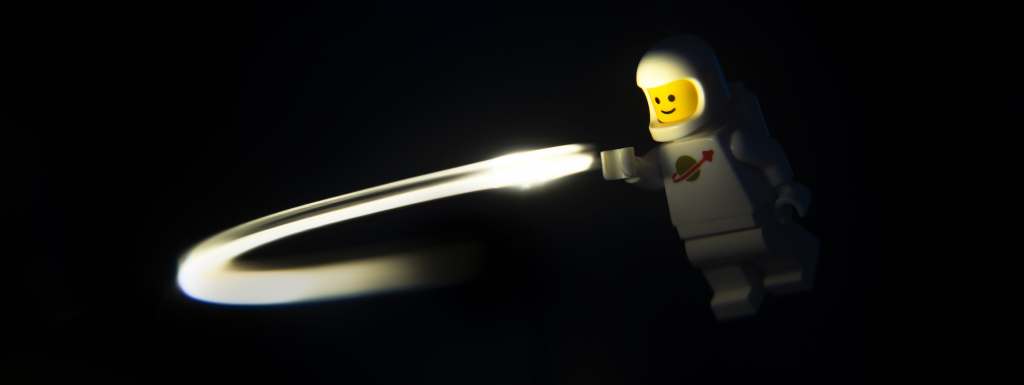
Being ambiguous
I took this photo almost a year ago. It was an idea of creating rings of light or orbits around my classic space minifigs. I love these guys, especially Jenny (the white one). And I love how they’ve become my go-to for creativity and playing with special effects. I did have the idea of making an ongoing series. But as usual, it just took me too long to get my act together and finally take some photographs.
When it comes to space I like to delve into more experimental imagery. In the photos, I’ve taken over the years taken huge influence from movies like 2001 or Interstellar. Taking the idea of what lies beyond the veil. With more of an inter-dimensional feel coming to the fore. Perhaps you could consider it as something from the more unexplainable side of science fiction. Exploring things beyond human comprehension.
“You’re free to speculate about the philosophical and allegorical meaning of the film” “but I don’t want to spell out a verbal road map for 2001 that every viewer will feel obligated to pursue or else fear he’s missed the point.”
Stanley Kubrick. Interviewed about 2001: A Space Odyssey. 1968
As Kubrick is saying, it’s not the definition of what the images are about. It’s more the possibilities of what they could be. Or how they could be interpreted by the viewer. I create these photos as something of a jumping-off point for the viewer. They are less about specific narratives that are derived from locations or characters and more about feelings or gestures.
For me, this type of photography doesn’t necessarily come from a desire to create open-ended narratives but more from the experimentation and the science of creating them. The style and nature of the resulting images do come into it, and there is a definite feeling I’m aspiring for. But it is certainly the experiment and its results rather than wanting to start these particular types of stories.
The joys of COVID
Recently I contracted COVID for a second time. luckily it was nowhere near as rough as the first time around. I bring it up though because being stuck in my bedroom and not being able to leave the house, made it very difficult to do any kind of toy photography.
That is when I came back to making some shooting stars. I had to set up a temporary studio structure in my room. which was conveniently helped by a new blackout blind I bought to help with my sleep.
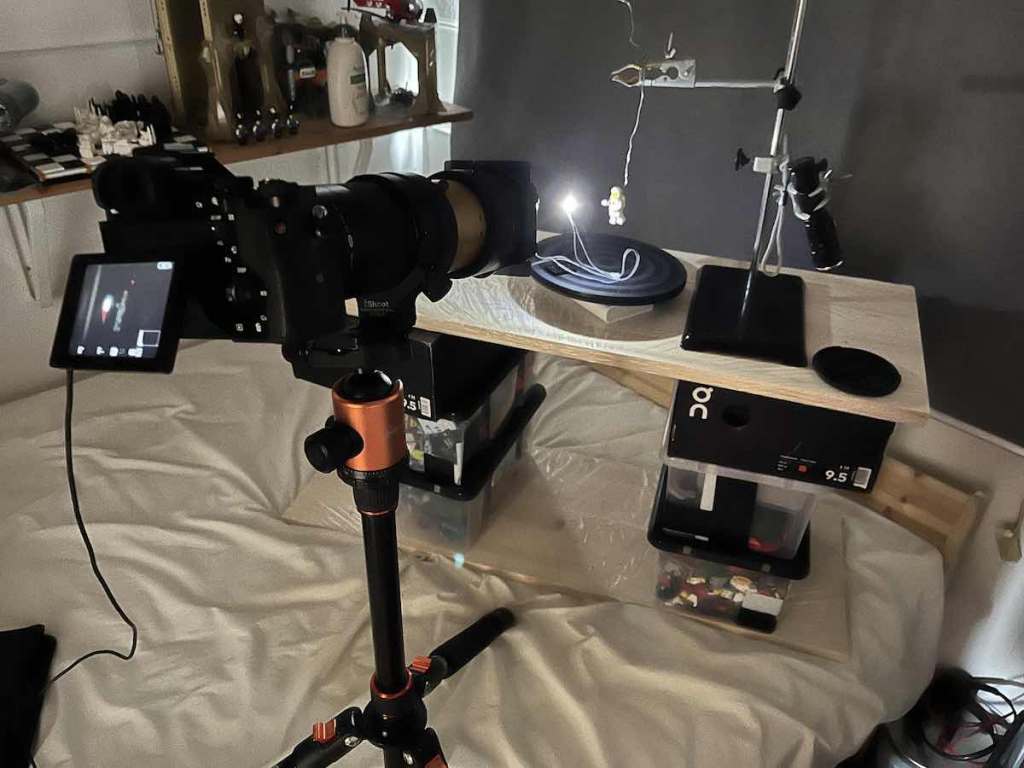
As you can see from the photo it was a very, very ad-hoc setup. I used some storage containers, shoe boxes, and some unused shelves to create a workbench on top of my bed. But when life gives you lemons… The tripod was half on and off the bed so I had to be extra careful of camera shake. I actually used a USB shutter release cable so I could avoid touching the tripod or the bed. My attempts to avoid everything were met with mixed results, to be honest though.
Gravitational singularity
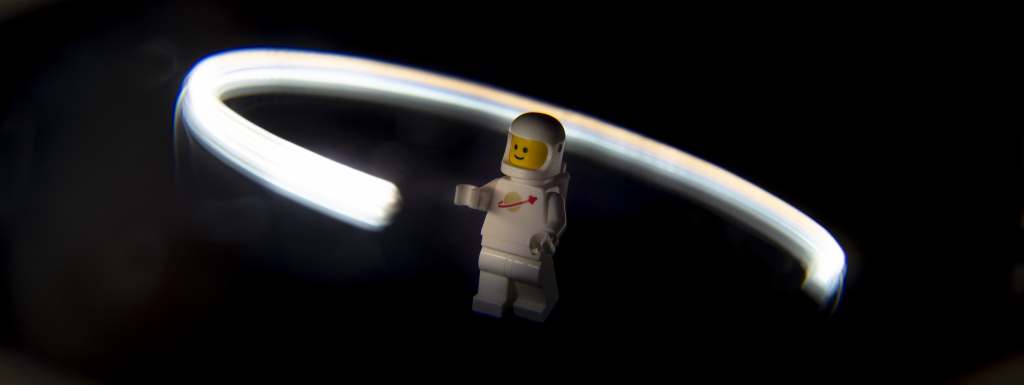
There is a playfulness to this photo that I love. It is like the astronaut has found a space firefly. It’s almost like Tinkerbell flying around Peter Pan. The light has agency and it is as if the astronaut is captivated by it. Both physically with its motion and narratively through their interaction. I like to think of the light as its own character in the photographs.
The lighting in all of these photos is simply from some LED studs. These are Lego studs with microlights fixed inside. They then run off of a wire to a USB connection and then can run from a power pack.
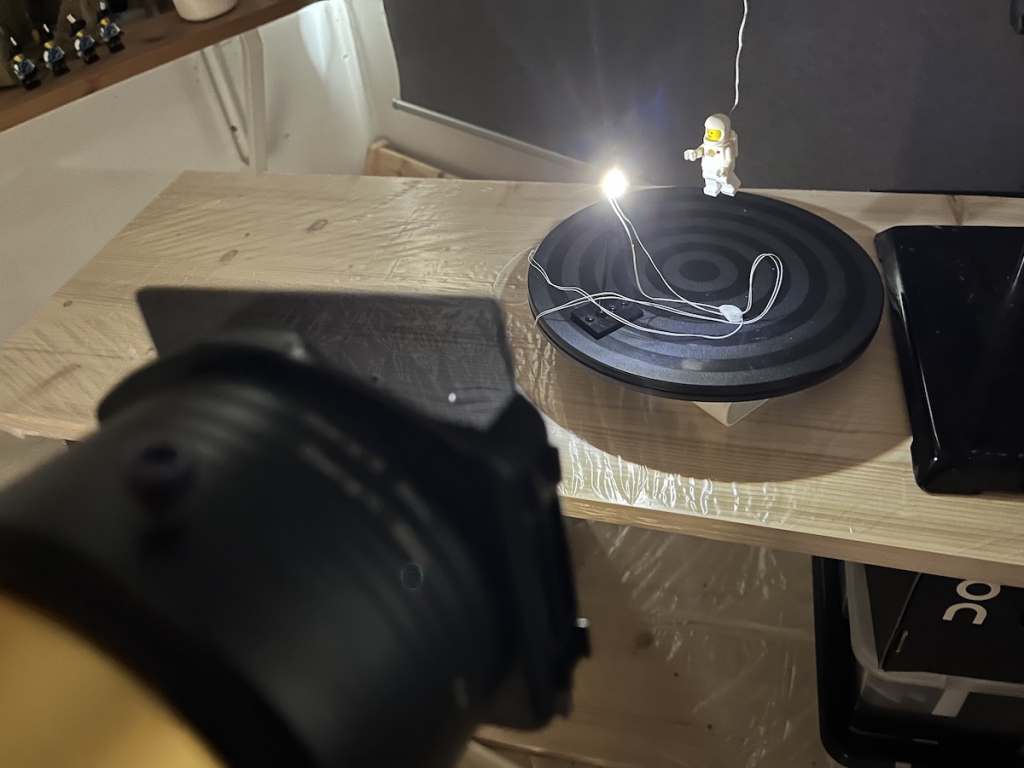
I’m a huge fan of using long exposures to a creative effect. In this case, the idea was to use light painting to create the shapes of light in the photo for the astronauts to interact with. Specifically orbits. To get long exposures it was also necessary to use ND (Neutral Density) filters to stop down and darken the exposure. When using lights as props it’s always important to make sure they don’t blow out the whites when taking any picture.
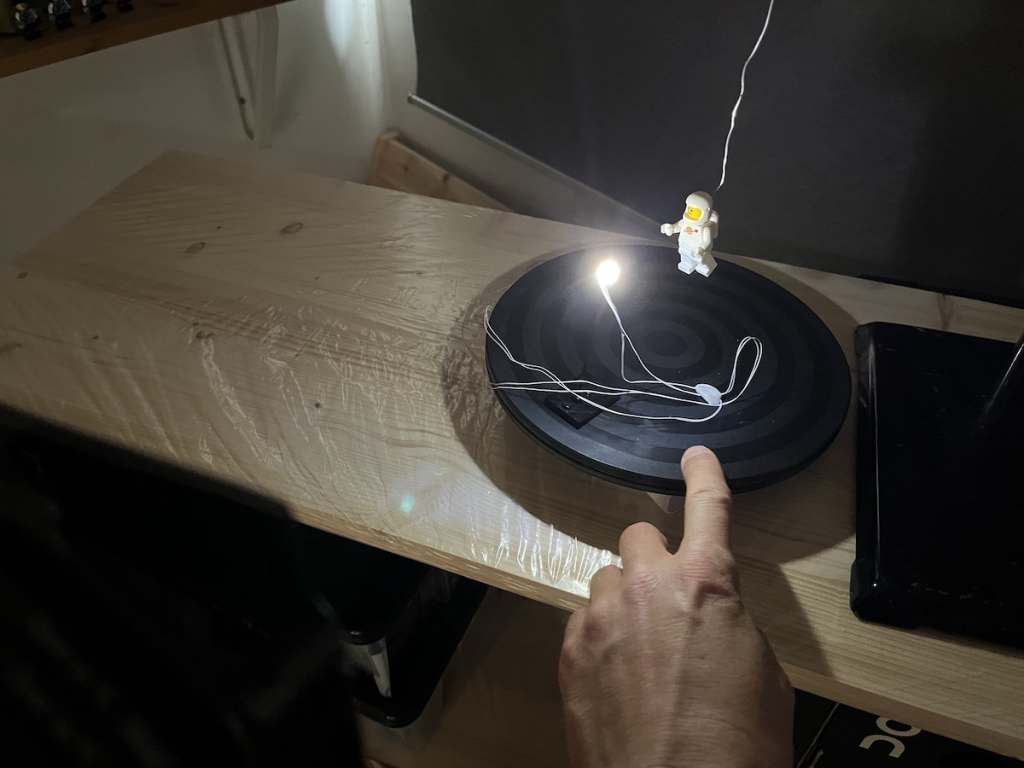
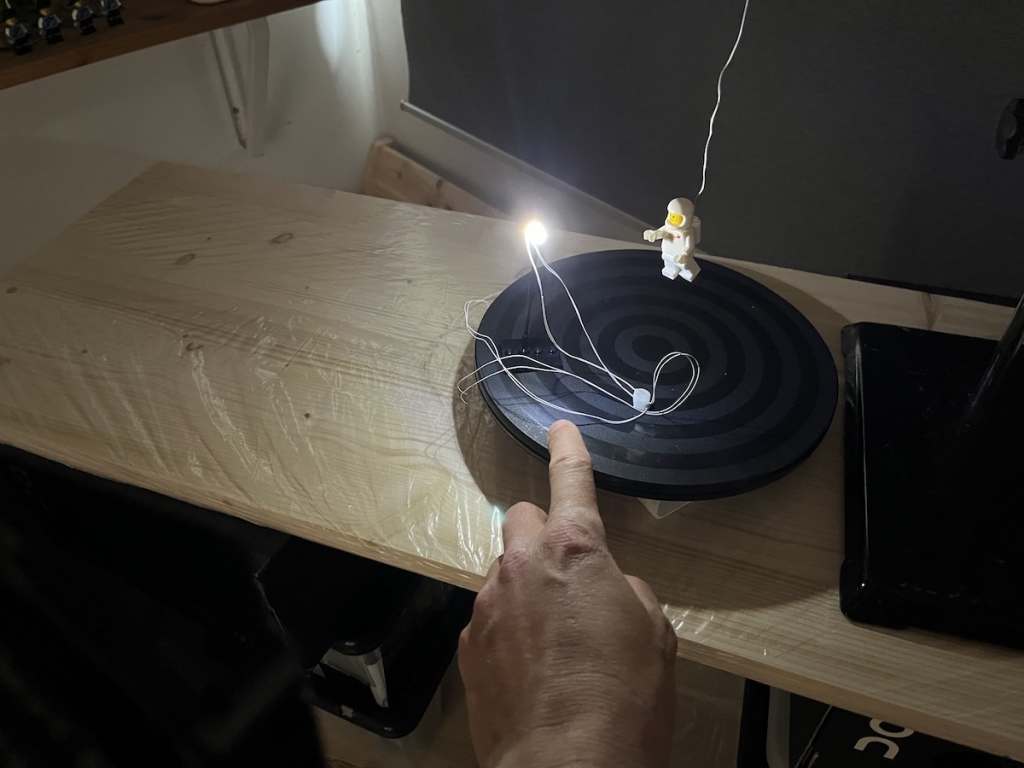
Classical electromagnetism
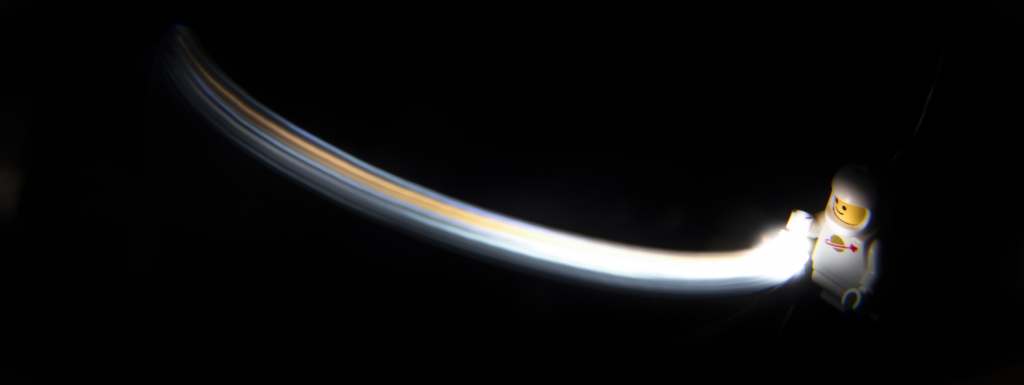
In this photo, you can see the two different LEDs that I used for these first few photos. I bought lots of these lights in various colours, but specifically two versions of white lights. Both lights in my hand are white lights, but one is warm, while the other is cool. As you can see from the trail of the light these two tones of light shine through beautifully. Bringing some extra detail and character to the glowing streak.
With these types of photos I’ve quite quickly moved away from the original intention to create orbiting light. This was something of a happy accident if I’m being honest. With any kind of light painting or moving object, the likelihood is there will be a lot of takes until the right image is found. As the Doc says, it’s about thinking fourth dimensionally. Through poor timing, I found that incomplete orbits were actually more appealing in the photos I was taking. The swooping track of the arc was still very appealing but it was much more interesting to me when not joined up.
With this particular photo, I wanted to paint across the photo. Creating a leading line through the light movement. Pulling the viewer’s eye across the photo to the awaiting astronaut. Because the only lighting is the studs the astronaut also seems to appear from the dark. Becoming visible finally as the light arrives from across the photo. I suppose there is something in there about journeys and destinations.
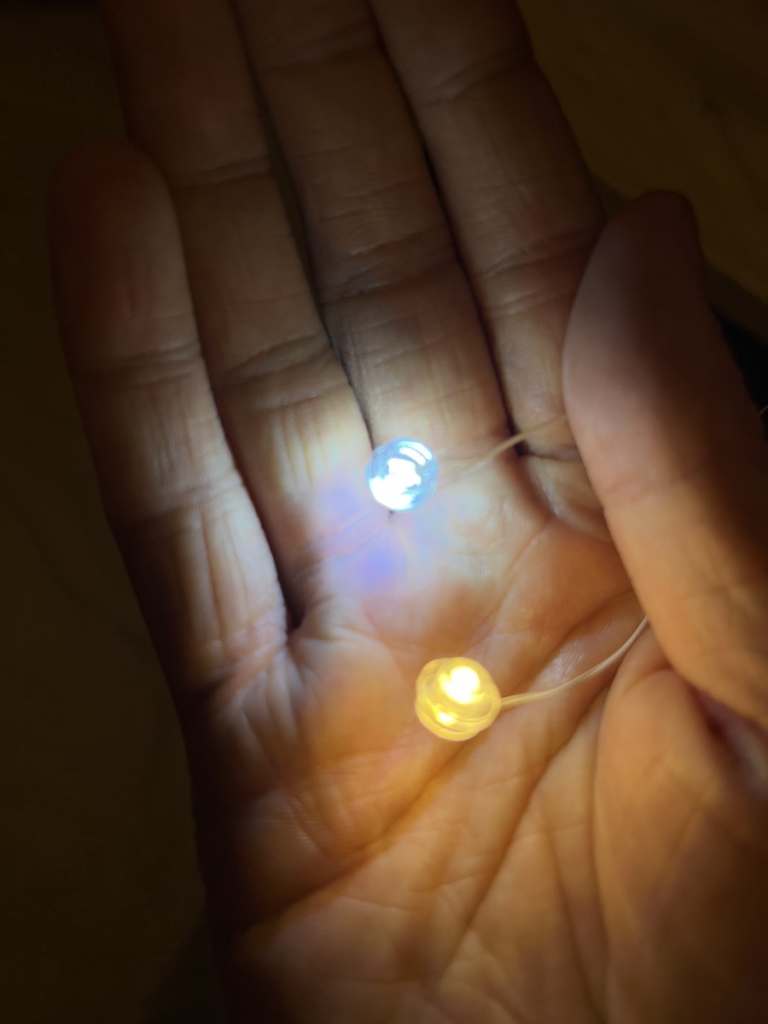
Evanescent field
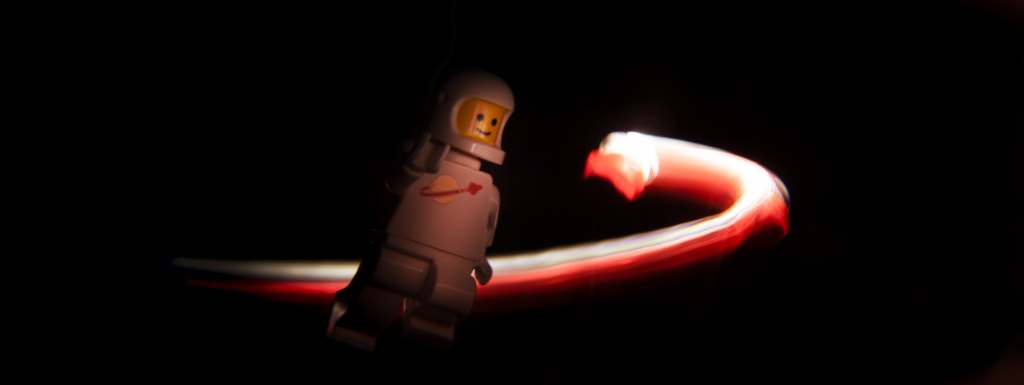
With this photo I took the different colours of the LEDs to greater contrast, swapping one of the whites with a red light. The result is almost dragon-like in the shape and effect it creates. The idea of the shooting star is still there but the intention is moving much further into a painterly style. There is also a feeling of an iteration where the astronaut and the light seem to be dancing and interacting with one another. Having the two elements of that relationship became very important. The interaction is key, especially with the minifig looking into the light. It’s why I like to have the astronaut reaching out, It suggests the two things coming together.
The idea of dancing, or floating through space is made all the easier by using Crazy Legs on the minifig. Creating a striking pose for the figure with light and shadows. But also giving the minifig some dynamism in the dancing.
I also love in this image how the minifig breaks the arc of the light’s path. It kind of reminds me of the fire extinguisher flying in Wall-e as Wall-e and Eve flying through space, dancing with one another,
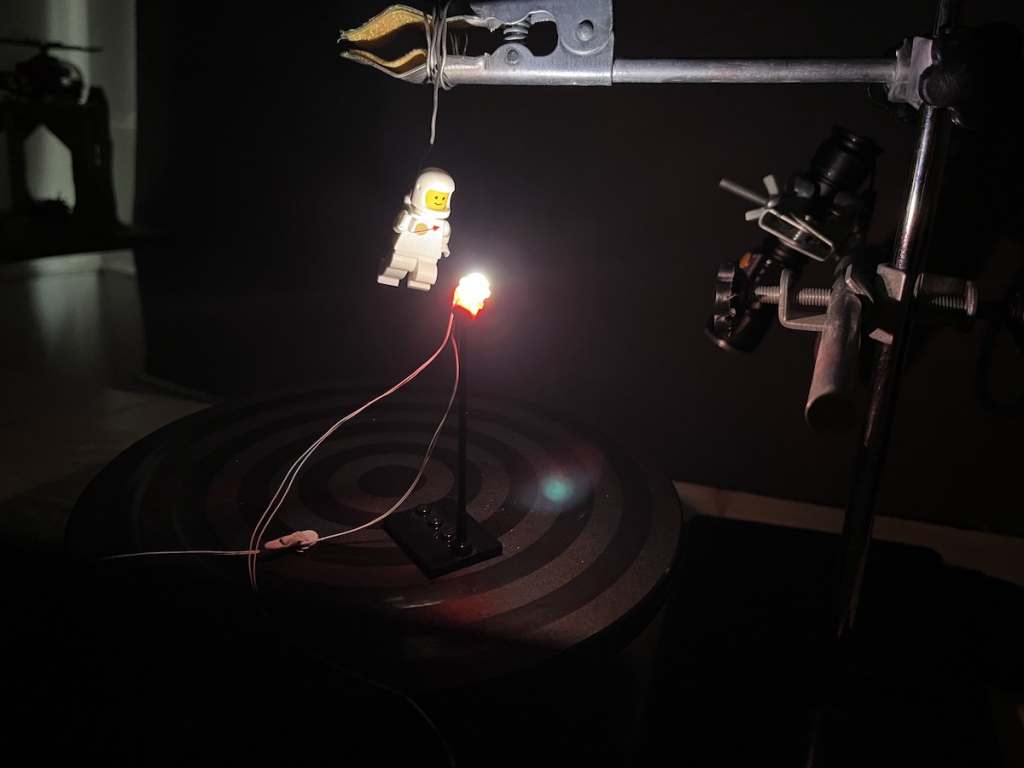
As you can see from the behind-the-scenes images the astronaut is always wired to the stand above. This allows the rotation of the turntable and the light from underneath. The minifig’s air tank makes a perfect grip if you slide the wire between the tank and the minifig’s back. It was a surprisingly strong grip, allowing for various poses.
Superluminal motion
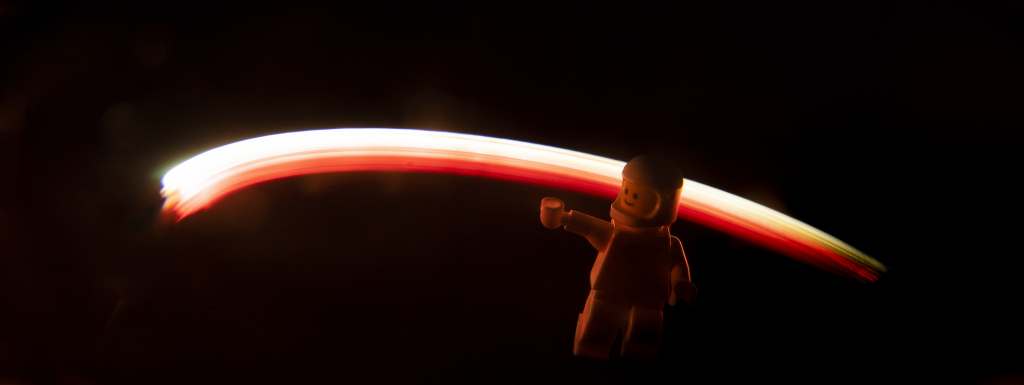
This photo is all about the light streak. It takes centre stage, being framed right in the middle. Whereas the minifig is actually in a very peculiar spot. I chose not to place the astronaut in a place of focus, avoiding the centre or any of the rule of thirds. It almost feels like they are falling off the edge of the image.
The important part of this setup was the arm of the minifigure. By pointing away and to the left it mimics the direction of the light streak.
On a very peculiar note and for whatever reason, this photo makes me feel like it’s some sort of upside-down Nike advert.
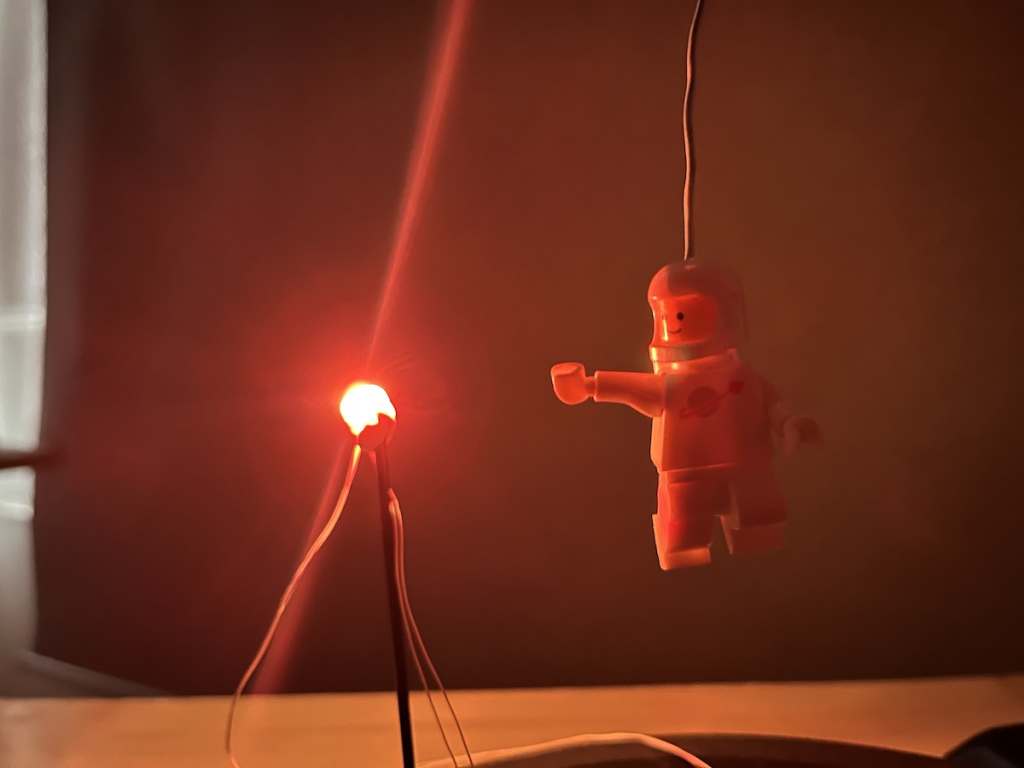
With this shot I added some Crazy Arms as well as some Crazy Legs to the minifig. I’m not sure the legs make much difference to the resulting photo. but the arm makes the narrative of the image work.
Kinetic lethargy

With this final photo, it is all about the two subjects coming together. In the previous photos I feel it was more the light interacting with the minifigure, and orbiting around it. In this one, it’s much more even with the two subjects traveling towards one another. This is obviously helped by the inclusion of Crazy Arms and Legs for the minifigure. The pose gives more agency, like the astronaut is moving through space and reaching out.
I still used the turntable to create the light streak. But this time it was a much shorter distance of travel and with most of the motion coming towards the camera. By having the light travel in a curve it still maintains a level of character and importantly depth. Straight-moving lines can be difficult to judge. They end up being flat due to the bright light being consistent wherever it is in relation to the camera. By adding in the curvature of the path, it just provides a little extra.
Another thing I really like about a lot of these photos is the flat lighting on the minifigures themselves. With a photography style using lots of strong lighting and a subject that is highly reflective is something that is rare for me. I know it is a by-product of the moving light creating a more well-rounded exposure. But it was a pleasing and welcome mistake.
Look up to the stars and see…
I’m really glad I finally got back to taking these types of photos. It’s been way too long to sit on an idea. But if I am honest, I am my own worst enemy when it comes to this. Always waiting and stockpiling ideas for future use. It’s something I’m trying to be better at. Doing things today, rather than waiting for tomorrow.
When it comes to the shooting stars aspect of these photos the other thing is practice. Being someone who has taken lots of intentionally motion-blurred photos in the past it is both hit and miss and practice makes perfect. For every finished photo, there are between 20 to 50 attempts to capture the movement. But there is also a feel and timing to things. Meaning, with practice those attempts certainly come down.
I guess to finish off this post. I’m saying try out your ideas and to take advantage of what you can do and when. But I’m also giving myself a talking-to, and saying I need to get my ass in gear and take more photos.


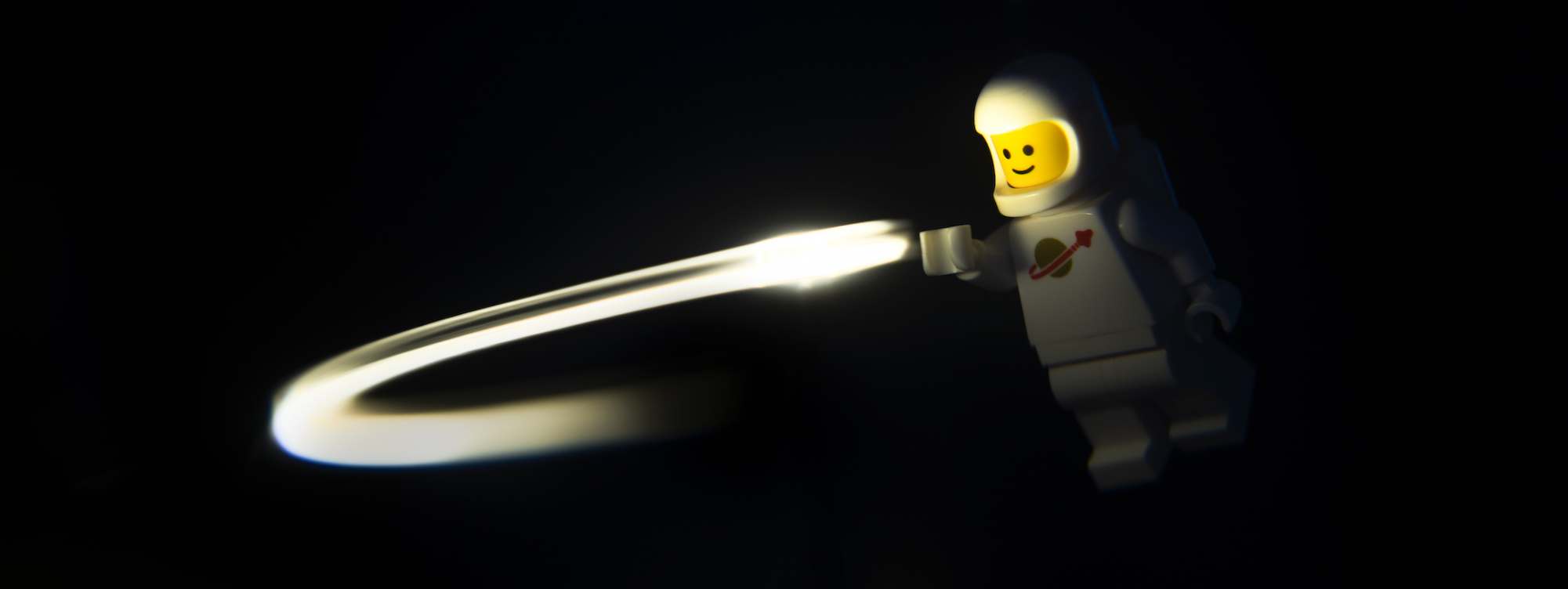
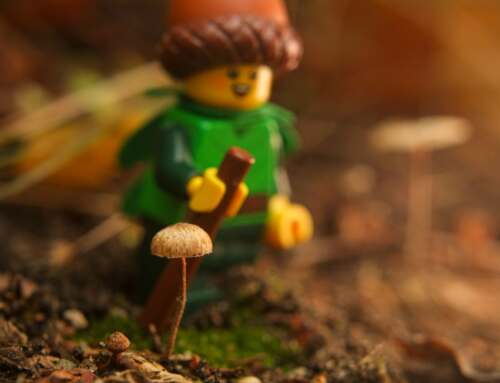
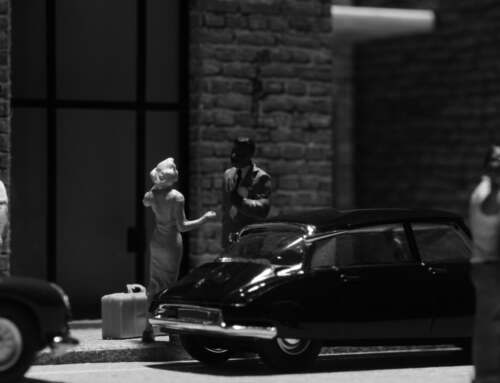
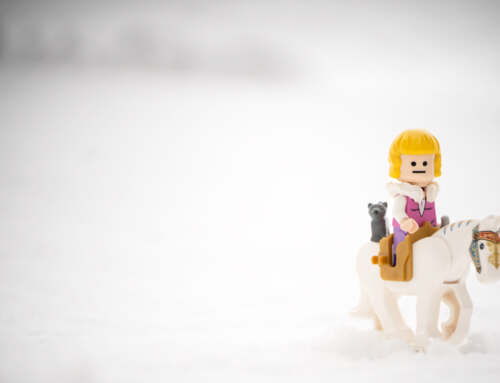
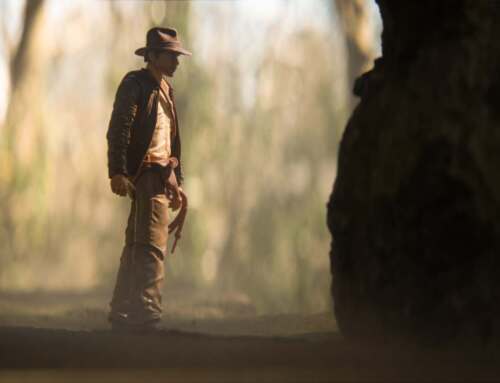
Tom – thanks for this inspiration post! Ive always loved this series and now Im inspired to try it myself! Maybe not with an anamorphic lens it wont be as spectacular…but I will try to emulate the master! Thank you so much for sharing and inspiring!!
You’re welcome Shelly, always happy to share. And it’s fun to see behind the scenes when it comes to experimentation. I’m not sure the anamorphic effects too much with these, but I’m sure your LensBaby will create some exciting photos too. I look forward to seeing them.
Magnificent results! I love the idea of an astronaut dancing in space with some sort of light intelligence. Such a cool concept and really thoughtfully brought to fruition. I like the trails and the movement in these shots.
Thanks Joe. The light was always meant to be something around the minifigure, but I couldn’t help but be drawn into the possibility of it as it’s own character when I started to see the results.
Thank you for this! I am very happy to know how these came about as well as how you managed to create them. I particularly love the classical electromagnetism image!
Thanks Molly. I’m glad you enjoyed the post. I think it might be my favourite of the bunch too. I especially like the subtle colours within the light itself on that one.